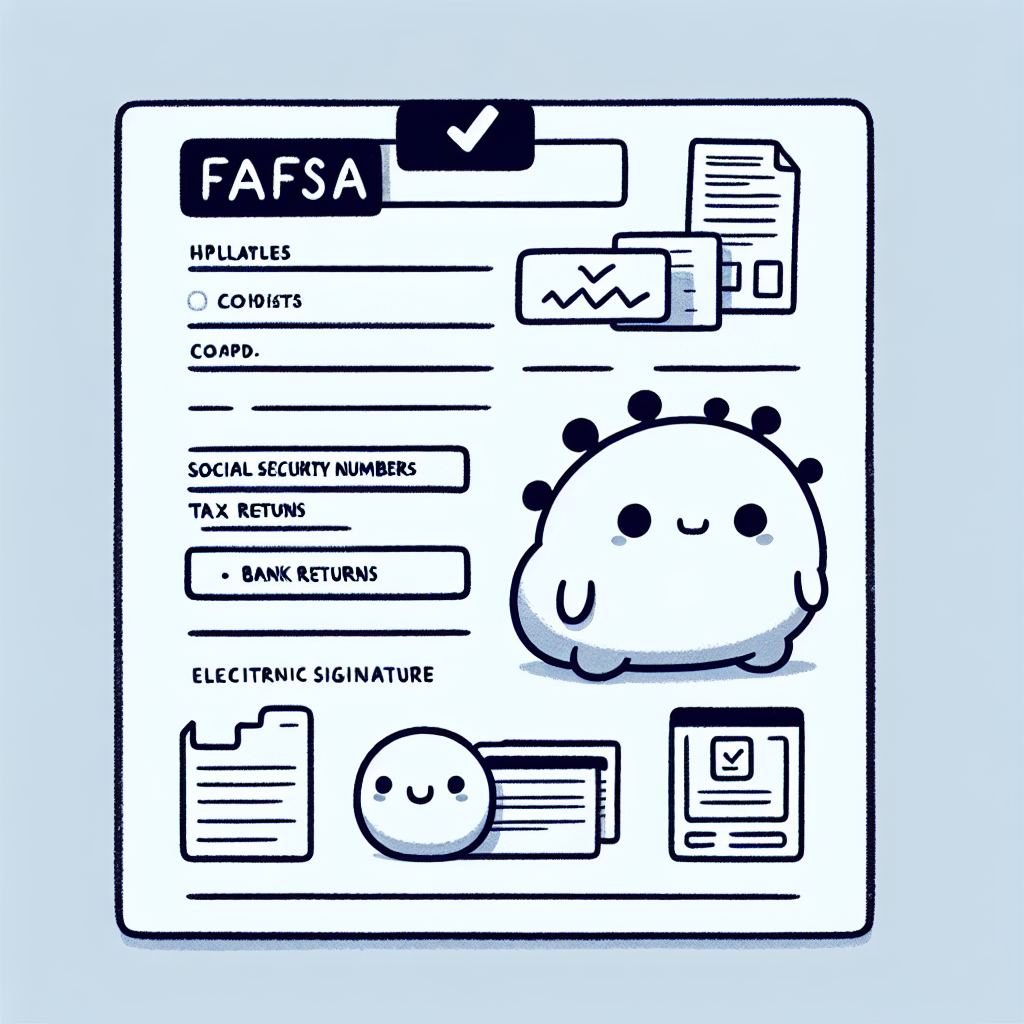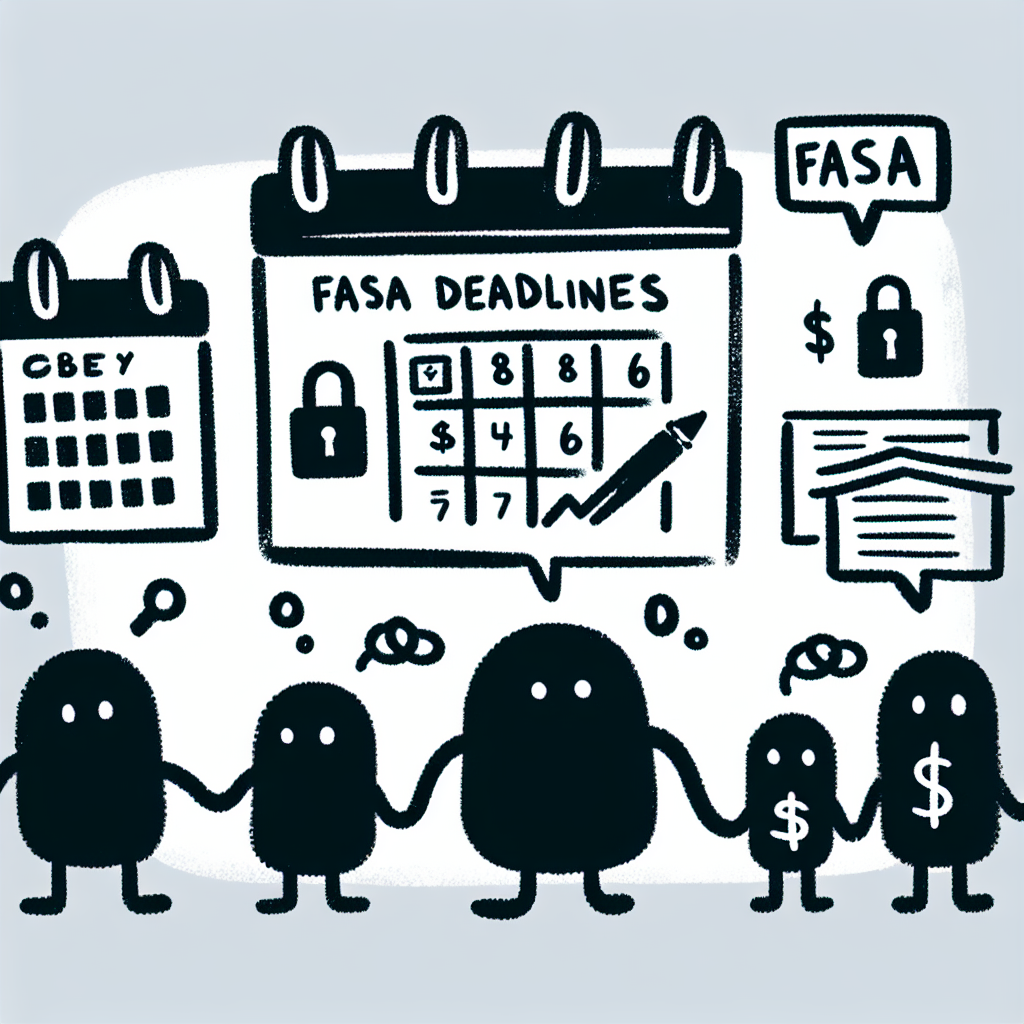Introduction
Navigating the cost of higher education can be overwhelming, but financial aid plays a crucial role in making college more affordable for millions of students. For many families, securing financial aid is the difference between attending college and missing out on higher education altogether. Understanding how to access this support begins with the financial aid application process.
At the center of this process is the FAFSA—the Free Application for Federal Student Aid. The FAFSA is the primary tool used by the federal government, states, and colleges to determine a student's eligibility for financial assistance, including grants, loans, and work-study opportunities. Completing the FAFSA is often the first and most important step in receiving financial aid application help.
Unfortunately, each year, billions of dollars in financial aid go unclaimed simply because eligible students do not complete the FAFSA. According to a National College Attainment Network report, the high school class of 2021 left an estimated $3.75 billion in Pell Grants on the table by not completing the FAFSA. This highlights the critical need for accessible, accurate financial aid application help to ensure students can take full advantage of the resources available to them.

FAFSA and Financial Aid: Why It Matters
The High Stakes of FAFSA Non-Completion
Nearly 40% of high school graduates fail to complete the FAFSA, according to U.S. News. This lack of completion often results in students missing out on substantial financial aid opportunities, such as Pell Grants, subsidized federal loans, and campus-based aid programs. Without submitting the FAFSA, students may face greater financial barriers to attending college.
The Role of FAFSA in College Affordability
The FAFSA plays a central role in determining a student's eligibility for financial assistance. It unlocks access to federal, state, and institutional aid, including both need-based and merit-based support. Many colleges also consider FAFSA status when making admissions decisions and awarding scholarships, making it a critical component of the college application process. For families seeking financial aid application help, understanding the value of FAFSA is essential.
Types of Financial Aid Available
Filing the FAFSA opens the door to several types of financial aid:
- Grants: These include Federal Pell Grants and the Federal Supplemental Educational Opportunity Grant (FSEOG), which do not require repayment.
- Loans: Federal student loans are available in subsidized (need-based) and unsubsidized forms.
- Scholarships: Many scholarships, both need- and merit-based, require FAFSA completion to determine eligibility.
- Work-Study: The Federal Work-Study program provides on-campus job opportunities tied directly to FAFSA information.
For a more detailed breakdown of these financial aid options, see the Guide to Understanding College Financial Aid. Seeking timely financial aid application help can ensure that students take full advantage of these resources.

📝 Step-by-Step Guide to Completing the FAFSA
Before You Apply
To get the most out of financial aid application help, start by gathering the necessary documents. You’ll need Social Security Numbers (SSNs) for you and your parents (if applicable), prior-year federal tax returns, W-2 forms, records of untaxed income, and current bank statements. These documents will ensure you can accurately complete each FAFSA section.
Next, create your Federal Student Aid (FSA) ID at studentaid.gov. This ID allows you to sign the FAFSA electronically and access your financial aid information later on.
Determine your dependency status. If you’re considered a dependent student, your parents’ financial information must be included. The FAFSA provides a series of questions to help clarify this status.
Completing the FAFSA: Section-by-Section Tips
Start with the student demographics section. Enter your name, address, date of birth, and other identifying information exactly as it appears on legal documents. Mistakes here can delay processing.
In the school selection section, list all colleges you’re considering, even if you haven’t applied or been accepted yet. You can list up to 20 schools online.
The financial information section is crucial. Use the IRS Data Retrieval Tool (DRT) if eligible—it imports tax information directly, reducing errors. If you’re entering data manually, double-check figures from your tax documents.
Finally, review the entire application carefully. Both student and one parent (if dependent) must sign using their FSA IDs before submitting.
Common Mistakes to Avoid
Avoid missing deadlines by checking federal, state, and school-specific submission dates. Late applications may lose out on aid.
Don’t leave fields blank. Use “0” or “Not Applicable” where appropriate. Incomplete forms can delay or reduce aid.
Use the IRS DRT if you’re eligible. It simplifies the process and reduces errors that could affect your aid amount.
Most importantly, don’t assume you won’t qualify for aid. Many students who thought they weren’t eligible received assistance after applying.
FAFSA Renewal: Why It’s Just As Important
FAFSA must be renewed each year to continue receiving aid. Renewal is often quicker since some information carries over.
Research shows that personalized reminders can significantly boost renewal rates (Machine Learning Who to Nudge). Staying on top of this annual task ensures you don’t miss out on funding opportunities.
Use financial aid application help resources each year to stay updated on any changes and complete the form accurately.

Personalized Support for Underserved Families
Families from underserved communities often face significant barriers when navigating the financial aid process. Providing effective financial aid application help requires more than just distributing information—it demands a personalized, culturally competent approach.
The Importance of Trust and Relationships
Traditional outreach methods, such as mass emails or flyers, often fail to engage underserved families. These approaches can overlook the historical and social dynamics that shape trust in institutions. Building trust is essential and begins with offering personalized support that respects cultural and linguistic differences. Community liaisons who understand local needs and values can make a meaningful difference. Research supports this approach, emphasizing the need for tailored interventions over generic resource mapping (Not Another School Resource Map).
Community-Based Solutions
Working with trusted local institutions—such as high schools, community centers, and religious organizations—can increase the effectiveness of financial aid application help. These organizations can serve as hubs for outreach and support. One strategy is to train local FAFSA ambassadors or peer mentors who can guide students and families through the application process. These mentors often share cultural backgrounds or community ties with the families they assist, which helps build credibility and comfort.
Multilingual and Accessible Resources
Language should not be a barrier to accessing financial aid. Translating materials into multiple languages ensures that non-English-speaking families can fully understand the application process. Additionally, offering one-on-one appointments and virtual help sessions gives families the flexibility to seek assistance in a format that suits their needs. These personalized support options can significantly improve engagement and application completion rates among underserved groups.

Leveraging Technology and Data Science for Better Outcomes
Technology and data science have transformed how institutions provide financial aid application help, enabling more targeted and efficient support for students.
Predictive Tools and Smart Outreach
Data science can be used to identify students at risk of not completing their financial aid applications. By analyzing historical data and student profiles, schools can pinpoint which students may need additional assistance or follow-up. This targeted approach allows for timely interventions that improve application completion rates. Research supports this method, such as the study on using data science to promote college savings and planning behaviors (Promoting Saving for College Through Data Science).
Nudging Through Digital Platforms
Behavioral science-informed strategies like digital nudging are effective in improving student engagement. Schools and organizations are leveraging text messages, emails, and app notifications to remind students about key financial aid deadlines and tasks. These nudges serve to educate and motivate students throughout the application process, making financial aid application help more accessible and user-friendly.
FAFSA Completion Trackers
FAFSA completion trackers give schools and community organizations real-time data on student progress. By monitoring completion rates, educators can identify where students are getting stuck and deploy interventions accordingly. These tools are instrumental in ensuring timely and accurate financial aid application help for all students.

Resources for Help and Continued Learning
Finding financial aid application help can be easier with the right resources. Whether you're just starting your FAFSA or navigating award letters, these tools and support systems can guide you through the process.
Government and Official Tools
The federal government provides direct support for students and families completing the FAFSA. The official FAFSA.gov site is the primary location to submit your application and find answers to common questions. For more personalized financial aid application help, the Federal Student Aid Information Center offers assistance via phone, email, and live chat.
Local and School-Based Assistance
Many high schools offer dedicated financial aid nights, where students and parents can receive in-person help filling out the FAFSA. School counselors are also a valuable resource for financial aid application help, providing guidance tailored to your academic and financial situation. Additionally, college access nonprofits and regional advising corps often offer free support to students in underserved communities.
Online Guides and Helplines
For comprehensive articles and expert tips, online resources can be especially useful. The U.S. News FAFSA Tips article provides practical advice on avoiding common mistakes. Meanwhile, the U.S. News Financial Aid Guide breaks down the entire process of securing financial aid, offering ongoing learning for families navigating college costs.
These resources are essential for anyone seeking financial aid application help, offering both immediate guidance and long-term understanding.

Conclusion: Make the Most of Your Financial Aid Opportunity
Filing the FAFSA is the first and most important step in securing college affordability. It determines eligibility for federal grants, loans, and work-study opportunities, making it essential for students seeking financial support.
With the right financial aid application help, students can navigate the process more efficiently. Access to proper guidance, personalized support, and smart tools ensures that applicants don't miss out on valuable funding.
Don’t leave money on the table—complete your FAFSA with confidence and take full advantage of the financial aid you’re eligible for. Getting the help you need can make all the difference in your educational journey.

📚 Appendix: Quick Reference
FAFSA Deadlines (Federal, State, Institutional)
- Federal: June 30 (subject to change)
- State: Deadlines vary by state—check local guidelines for accuracy
- Institutional: Often much earlier than federal and state deadlines; consult each college’s financial aid office
Checklist: What You Need to File the FAFSA
- FSA ID (for both student and parent, if dependent)
- Social Security Number or Alien Registration Number
- Federal tax returns, W-2s, and other records of income
- Records of untaxed income (such as child support or interest income)
- Bank account statements and records of investments
- A list of colleges you’re applying to (up to 20 schools on the online FAFSA)
Acronyms to Know
- FAFSA – Free Application for Federal Student Aid
- FSA ID – Federal Student Aid Identification
- EFC – Expected Family Contribution (soon to be replaced by SAI: Student Aid Index)
- SAR – Student Aid Report
- IRS DRT – Internal Revenue Service Data Retrieval Tool
- COA – Cost of Attendance
- Pell – Federal Pell Grant
- FSEOG – Federal Supplemental Educational Opportunity Grant
- CSS Profile – College Scholarship Service Profile (used by some institutions for non-federal aid)
"FAFSA completion is not just a bureaucratic task—it's a gateway to opportunity. With the right help, we can ensure no student is left behind due to financial barriers."














